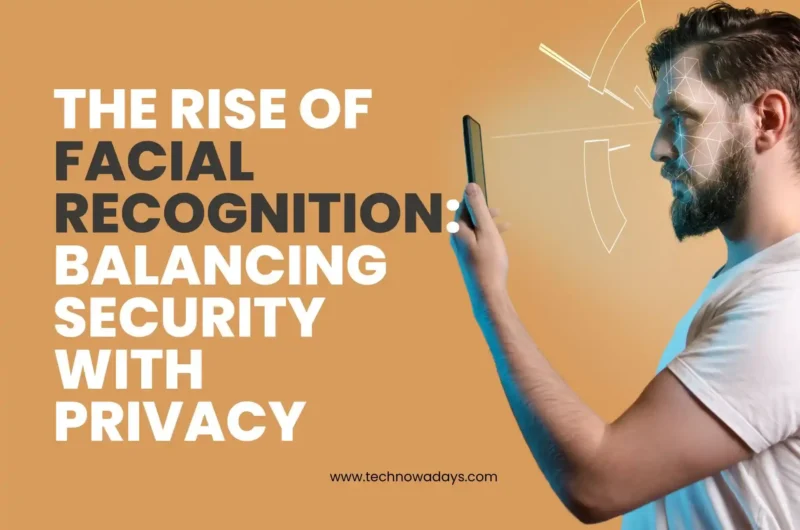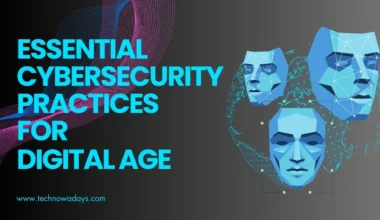Facial recognition technology is not new to society. You must have experienced faceprint biometric identifications in several organizations, especially in airports.
Today, we will see how face recognition systems can assist society in countering several day-to-day challenges, from security measures to the retail management industry.
In this comprehensive discussion, we will learn about the pros and cons of facial recognition.
What is Facial Recognition?
It is a technique for recognizing a person by matching facial characteristics with a database of recognized faces. The technique supports recognizing a person in person or from a video or image frame.
Facial Recognition is not a new technology; it is already applicable in several industries, including retail, entertainment, security, and B2B. According to the 2023 statistical report on facial recognition systems, the technology is already used by 80% of the world’s governments.
Moreover, with the adoption of facial recognition, businesses have seen substantial growth in business revenue, with a 68% startup rate. It has the ability to provide 99.97% accurate results.
For example, you must be aware of Facebook’s Deepface software, which has an accuracy of 99.25% in recognizing human faces.
Their biggest role is in management departments, where you do not need to keep track of your employees, their payroll, attendance, and duty hours. Facial recognition systems have also become common due to advancements in deep learning.
How Facial Recognition System Work?
The system is based on highly efficient and smart algorithms that can recognize a face in milliseconds using their database. We will not frustrate you by discussing these exclusive algorithms. Let’s discuss the simple four-step workings of the facial recognition system.
1- Face Detection
The first step is face detection. The system will look for faces in the image, video, or in real-time and detect them.
2- Face Analysis
After detecting the face in the image or video, the system analyzes its features, such as the length of the nose, forehead, distance between eyes, width of the mouth, and jawline.
Then, it converts this information into statistical data by using series and attributes in a database. This step can be error-prone, as the system can misinterpret any feature of the face and add the wrong state in the database.
3- Convert the Image into Data
In this step, the system will convert the statistical analysis into a faceprint. Each person on this planet has different faceprints, and everyone has unique fingerprints.
4- Find a Match
After creating the faceprints, the next step is to find a match. The system will dig out its database to identify verification of the person in the image or video, as the system will check if we have the information about the person or if it is unrecognizable to the system.
Those smartphones with facial recognition features use the same verification method to keep your device secure and locked.
Application of Facial Recognition Systems
The benefits of facial recognition can be seen in every department of life. We will discuss each industry individually to give you a brief knowledge of its applications.
Law Enforcement and Crime Prevention
Law enforcement departments can use facial recognition systems to capture any suspect criminal on camera. For example, if a suspect visits a retail store, the system can detect their face and analyze their facial features to match the statistics with their databases.
For any law enforcement department, it is essential to use this advanced system to control crimes and ensure security measures in society.
Attendance Management System
You must have seen the biometric system in several businesses and companies, where they use facial recognition systems to mark the employee’s attendance instead of fingerprints.
People are switching from touch-based to facial recognition systems due to hygienic aspects. These systems do not just help the companies mark employee attendance but keep their personal data managed, track duty timings, in and out timing, and help the manager to create payrolls of the employees based on their duty hours.
Finance Management
Facial recognition has marked its success in finance management by introducing fintech operations. Now, you can use facial recognition systems and face locks to make transactions using your smartphones and e-wallets.
As we mentioned above, each person’s faceprint is different, which means that by using face locks, you can reduce the chances of theft or scams. It provides a secure, quick, and verified way to make online transactions.
Social Media Profile Management
Social media platforms bring a huge risk of online privacy, data stealing, misuse of any account, and cyberbullying. Thanks to facial recognition systems that introduced us to advanced profile verification methods by using faceprints.
With this verification method, there will not be any unauthorized access as these machine-learning techniques have provided you with advanced profile authentication methods that can easily filter out frauds and fake IDs.
Face Recognition Pros and Cons
Face recognition is an AI-backed technology that provides countless benefits to businesses. Still, it creates some risks due to the possibility of inaccurate face recognition or wrong statistics. Therefore, to understand its potential to shape our future, we must discuss the pros and cons of face recognition.
Pros
- Efficient Security Measures: Due to its enhanced ability to provide accurate identifications with fast, reliable, and precise results, it can accurately maintain the security of any place. These face detectors are now installed in different places such as airports, retail stores, hospitals, government offices, and corporate companies.
- Fraud Prevention: Whether for Social media accounts or online banking systems, face detectors help users keep their identities safe by reducing the chances of identity theft and fraud. For example, in 2018, HSBC introduced facial recognition banking in its system, replacing the need for usernames and passwords. Users can access their accounts and make transactions based on their faceprints. This not only prevents the user from fraud but also assists them in making transactions in less time.
- Personalization: Facial recognition has taken the concept of personalized services to the next level. Now you can adjust or customize any service by just recognizing the face of the person. For example, suppose you introduce face recognition technology in automobiles. In that case, every time a passenger or driver sits in the car, the system will detect the face and adjust the car settings accordingly, such as heating, lights, seat position, and content recommendations. Moreover, it can also help the hotel managers to keep the rooms updated every time a guest returns by just detecting his face, the room will auto-set according to the customer’s requirements.
- Improved Customer Experience: All this assistance in maintaining personalization and customization in services according to customer demand will improve the customer experience and help you maintain an excellent business reputation. For example, according to Oracle’s Hotel report, customers feel more relaxed with a facial recognition lock on the door as it will take less time and effort to lock and unlock. Now, you do not have to carry cards everywhere or remember different passwords; just use your faceprints for financial transactions, opening doors, or protecting your social media accounts.
Cons
- Privacy Issues: Facial recognition systems are normally based on databases that store all of your personal information, including your biometric details. If the system is not properly protected from any type of cyberattack, it can create several privacy issues.
- Problems in Specific Conditions: Sometimes a system can be wrong too. A face can be shaped differently with different facial expressions. Moreover, it is also possible for a face that appears bright during the day to appear differently in dim light. The system can make mistakes if the face is tilted up or down or left or right, which normally happens in real-world scenarios.
- Identical Feature and Bias Nature: Machines can also make mistakes in recognizing highly identical faces and other gender-based features in any face. Moreover, the system only works on its initial training datasets, if they lack any information and are unable to provide enough data to make accurate choices on gender-based recognitions, the system may fail to work efficiently.
Final Thoughts
A facial recognition system has more benefits than advantages. Its extensive use in security purposes and management areas cannot be denied. It has the potential to make people’s lives easy and help companies manage their everyday tasks properly.
Technology is still evolving and has the potential to bring unprecedented advancements by resolving the possible challenges in our everyday lives.






